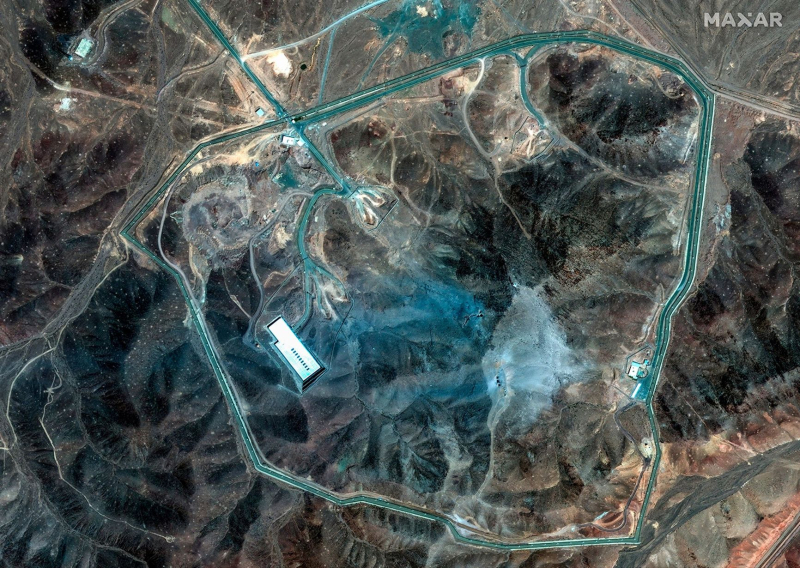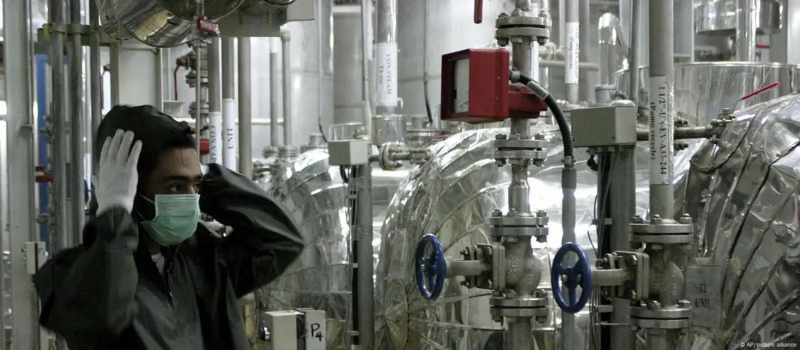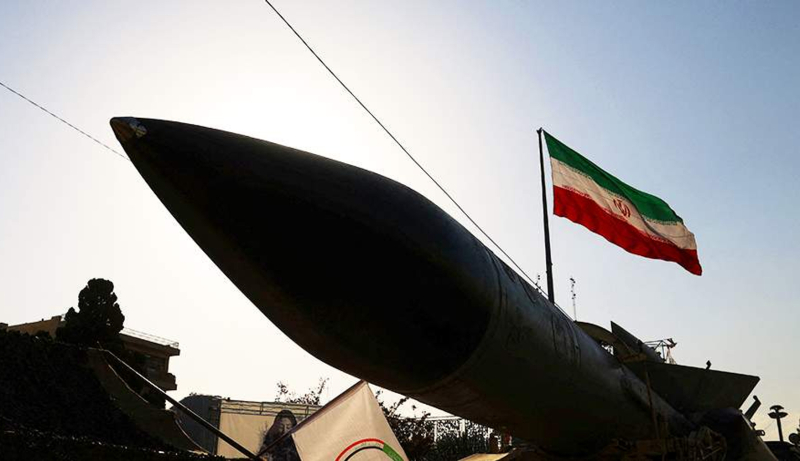After their recent strikes on Iran’s nuclear facilities, the leaders of Israel and the United States were quick to declare that the ayatollahs’ regime would no longer be able to obtain a nuclear bomb. However, numerous indirect indicators suggest that Iran has retained at least some of its capability to develop nuclear weapons. A preliminary assessment from U.S. intelligence also supports this conclusion. Without IAEA inspectors on the ground, the outside world will no longer be able to accurately assess the state of Iran’s nuclear program — meaning that its true condition will remain a matter of speculation for years to come.
Iran's nuclear program first became a subject of international concern in 2002, when a group of dissidents revealed that Tehran had set up two clandestine nuclear facilities intended for uranium enrichment — one in Natanz and the other in Arak. A year later, inspectors from the International Atomic Energy Agency (IAEA) confirmed the existence of uranium enrichment centrifuges in Iran, but subsequent diplomatic efforts to halt uranium enrichment in the country proved unsuccessful.
In September 2005, the IAEA found Iran to be in non-compliance with its Safeguards Agreement, as Tehran was denying inspectors access to its nuclear facilities. As a result, starting in 2006, international sanctions were imposed on the country.
By 2007, U.S. intelligence had determined that Iran was technologically capable of producing weapons-grade uranium and that it possessed the necessary equipment to develop nuclear warheads and delivery systems. Since then, Iran has walked a fine line between pursuing nuclear weapons capabilities and engaging in diplomacy in its efforts to maintain the image of a country complying with the Non-Proliferation Treaty (NPT). International diplomacy has aimed to prevent Iran from moving beyond the limits of a peaceful nuclear program.
IAEA reports show that Iran has recently accelerated its production of enriched uranium. By November 2024, it had produced 182 kg of uranium enriched to 60%. By February 2025, that amount had increased to 274 kg, and in May 2025, IAEA inspectors reported that Iran possessed at least 408 kg.
Before the Israeli strike, Iran sharply increased its production of uranium enriched to 60%
This amount of weapons-grade uranium is enough to produce nine nuclear warheads. For civilian nuclear energy, Iran only needed uranium enriched to 3.67%. Tehran never managed to provide a plausible explanation for the need to enrich uranium to 60%, and Israel concluded there was little time left to act.
On June 13, the Israel Defense Forces (IDF) launched attacks on dozens of Iranian nuclear facilities, military bases, and infrastructure sites as part of Operation Rising Lion. Key commanders of the Iranian army and the Islamic Revolutionary Guard Corps were also targeted. The strikes most notably hit uranium enrichment plants in Natanz and Fordow, a uranium conversion facility in Isfahan, a missile factory near Tabriz, and two centrifuge manufacturers in Karaj and Tehran. Several leading scientists involved in the nuclear program were also killed.
On June 22, the U.S. Air Force and Navy struck the Nuclear Technology Center in Isfahan and the plant in Natanz with Tomahawk cruise missiles launched from an Ohio-class submarine in an operation called “Midnight Hammer.” Strategic B-2 Spirit bombers dropped 12 powerful GBU-57 bunker-buster ordinances on Fordow and two more on Natanz. The number of bombs used may indicate that the U.S. was not fully confident that single strikes would be sufficient to penetrate the targets.

The Fordow enrichment facility is Iran’s most heavily protected nuclear site. It is believed to be located 90 meters underground beneath mountain rock, and it holds critical importance for Iran’s nuclear ambitions. The facility enriches uranium using six cascades of older IR-1 centrifuges, as well as ten cascades of more advanced IR-6 centrifuges. It is here that uranium enrichment can be increased from 60% to 90%, thereby reaching weapons-grade levels.
In March 2023, IAEA inspectors detected at Fordow particles of uranium enriched to 83.7%. Although no stockpiles of such uranium were found, experiments were likely being conducted to modify the cascades in order to achieve such high enrichment levels if needed.
Particles of uranium enriched to 83.7% were previously found at Fordow
General Dan Caine, the Chairman of the U.S. Joint Chiefs of Staff, stated that “all three sites sustained extremely severe damage and destruction.” Satellite images show bomb craters, blocked tunnel entrances, and damage to some surface structures.
If the strikes reached their targets, Iran would have likely lost both its operational centrifuges and the capability to reproduce them. If the centrifuges were not destroyed by the missile strikes, they were rendered useless due to the power outages. Consequently, Iran's known uranium enrichment capacities can be considered lost or disabled for an extended period.
If the strikes reached their targets, Iran has likely lost both its operational centrifuges and the capability to reproduce them
However, Iran still retains scientific and engineering potential. Additionally, just days before the attack, an increased truck activity was recorded near Fordow — which may support Iranian officials’ claims that enriched uranium stockpiles had been moved to secure locations in advance.
Another potentially plausible claim voiced by Tehran is that at least one secret uranium enrichment facility capable of housing centrifuges remains intact. Since early 2021, Iranian authorities have denied IAEA inspectors access to monitor or verify centrifuge production. Consequently, the IAEA does not know how many centrifuges have been installed or where they are located. Iran may have established a site with hundreds of new centrifuges at another secret location.
Considering that the uranium enrichment plants in Natanz and Fordow were built in secret and remained undisclosed for six to seven years, there remains the possibility that a smaller, harder-to-detect facility is still out there. According to physicists from the U.S. Institute for Science and International Security, producing 90% enriched uranium from 60% enriched uranium could be achieved in less than two weeks given the technological level of Iranian centrifuges.
However, highly enriched uranium alone is not enough to make a bomb. Additional time will be required to convert the uranium into metallic form and prepare it for use as a warhead. In other words, specialized explosives, detonators, and a warhead capable of being mounted on existing missiles need to be developed. It is known that Iran has attempted to work on these components, but there is no evidence of any achievements.
U.S. President Donald Trump and Israeli Prime Minister Benjamin Netanyahu have already declared that Iran’s nuclear program has been dismantled and the threat eliminated. However, their claims are overly optimistic. The future of Iran’s nuclear program will depend on the actual extent of the damage, its remaining secret nuclear facilities, and Tehran’s position in talks regarding the development of a peaceful nuclear industry.

Iran has either irreversibly lost its capacity to produce weapons-grade uranium, or else it has at least partially preserved it at a secret facility — meaning the true state of Iran’s nuclear program may not become clear until several years have passed. Even after losing its known nuclear facilities, the country retains scientific expertise and human resources. With political will, nuclear assets could be rebuilt within a few years. Moreover, if the stockpiles had been preemptively duplicated through clandestine enrichment operations, the American-Israeli military campaign could instead act as a catalyst for accelerated development of nuclear weapons.
In any case, regardless of further developments, Israel has demonstrated its willingness to pay a high price to eliminate the Iranian nuclear threat. Therefore, new strikes on nuclear targets in Iran, whether they are restored or discovered by intelligence, cannot be ruled out.



